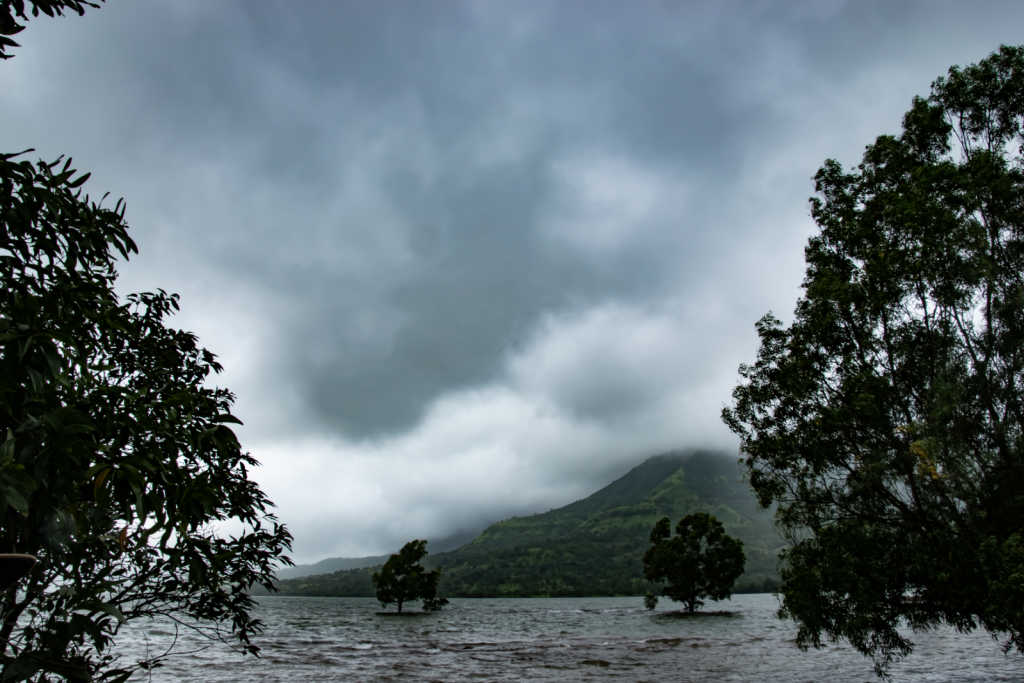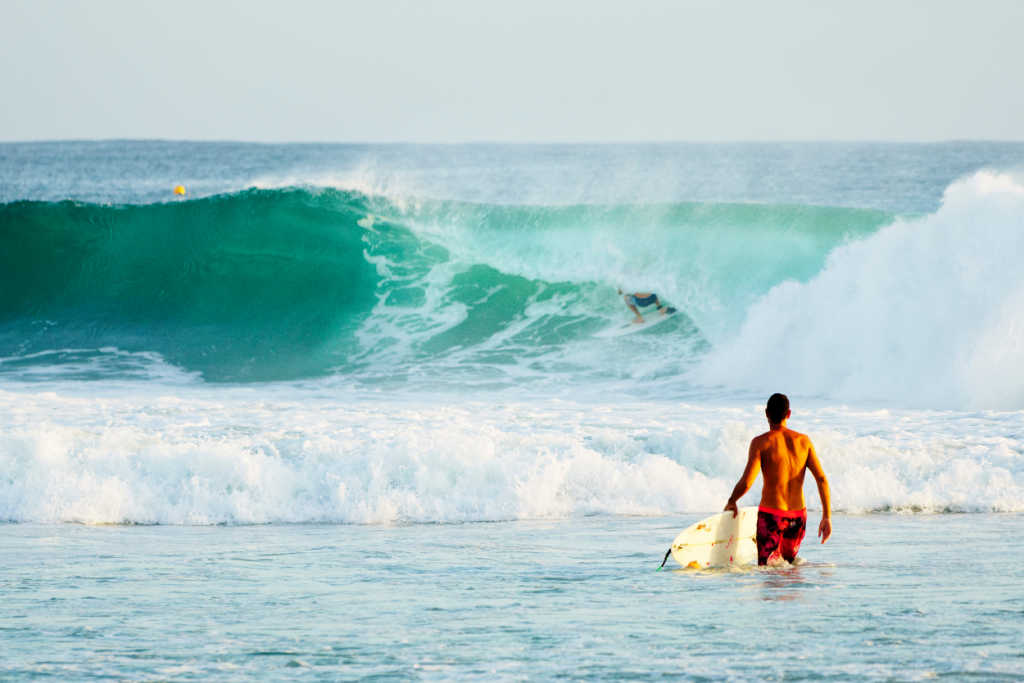Cyclones are rotating storms that form over warm bodies of water. They are most common in the tropics and subtropics, but can occur almost anywhere there is an ample supply of moisture and a conducive atmospheric environment. Cyclones form due to the synoptic scale circulation of air known as a Rossby cell. In layman’s terms, this means that because the Earth’s rotation acts as a giant gyroscope, the movement of air follows similar patterns along its surface. As air moves eastwards away from Africa and towards Asia and Australia, it becomes cooler at higher elevations and begins to descend again as it descends back east. This descending motion creates the organized flow known as a jet stream which flows from east to west at about 200km per hour (approximately 100kt). The jet stream is strongest during summer months when temperatures over land are higher than at lower latitudes. The result of this process is that when air descends once again over eastern Asia or Australia it begins to rotate counterclockwise relative to the rest of the continent or subcontinent. This upper-level turn creates what is known as cyclonic circulation and simply puts; these systems tend to bring good news!
How strong are cyclones?
Cyclones are classified as tropical cyclones based on wind speed and barometric pressure. The stronger the system, the stronger the winds. The strongest cyclones have sustained winds of 220km/h or greater. For more on how cyclones form, check out this National Geographic video.

What causes a cyclone?
Cyclones form in the same way as tropical storms; they are the result of warm, moist air ascending over a mountain range. The air has two choices: it can rise to a colder area at higher altitudes where it will dissipate, or it can descend near the ground and rotate in a counterclockwise direction. The rotation is what creates the cyclone. The American Meteorological Society defines a cyclone as “a rotating storm that forms over warm water and whose wind field is organized into a spiral”. They also use the term mesocyclone to describe these spiraling winds which have an average speed of between 18-55m per second (39-88km per hour). The winds create spiral bands of clouds called vortices that go around the center of circulation. There is also tearing along the inner edge of these spirals which results in thunderstorms and tornadoes.
Classification of Tropical Cyclones
There are four different types of tropical cyclones: the hurricane, which is a warm core system with sustained winds greater than 34 mph; the typhoon, which is a warm-core system with sustained winds greater than 74 mph; the subtropical or extra-tropical cyclone, which has sustained winds that are between 34-74 mph and refers to storms that form in high latitudes or regions with cold fronts; and the monsoon low, which is a dry low pressure associated with the Asian summer monsoon. These systems occur at different times of year but all have similar characteristics including wind speed.

Why do some cyclones last for a long time?
Cyclones can last for a long time, but they’re not always permanent. Depending on the strength, speed, and direction of the winds, cyclones can last as little as a few hours or up to several days. They are also capable of changing direction. In other words, this upper-level flow is constantly changing directions. Cyclones are classified according to their intensity: weak cyclones have winds from 39-73kt; moderate cyclones have winds from 74-82kt; strong or severe cyclones have winds from 83-158kt and very strong or violent cyclones have winds from 159+kt.
What determines the strength of a cyclone?
The strength of a cyclone is determined by the amount of air mass and the size of the storm. Because of this, it is impossible to predict how strong a storm will be without first obtaining its “cyclonic radius” which is obtained by measuring the radius at which the center of circulation (a vortex) is located. This radius can range from 300km to 18,000km! The most important factor in determining how strong a cyclone will get is the warm water it feeds on. If the water temperature exceeds 28 degrees Celsius, then you have a good chance that your natural disaster will be large. A larger cyclone also has more wind speed and this means more damage than smaller ones. For example, Hurricane Katrina had sustained winds speeds of 165mph and was equivalent to a Category 4 on the Saffir-Simpson Hurricane Scale. This severe cyclonic system resulted in an estimated $81 billion in damages (and counting).

How long does it take for a cyclone to reach India?
The first thing to note is that the cyclone must be able to take advantage of being over water. This is because the turn in airflow around a warm body of water is what creates a low-pressure system and allows cyclones to form. It takes only 24 hours for a low-pressure system to form due to the rotation in airflow. In terms of duration, it takes an average of six days for a storm system such as a tropical depression or tropical storm to reach India from its origin. The key here, though, is that this is an average time frame and can vary significantly depending on the movement of the storm systems.
How long does it take for a cyclone to dissipate?
It takes about six hours for the circulation to fully develop and about three days for one to dissipate. However, this process is not uniform across all cyclones. Some can last as little as four hours, while others persist for more than a week!
Which systems are most likely to affect India and which ones have the highest potential?

India is most susceptible to hurricanes and typhoons because the country is located in the region of the tropics where cyclones are most common. The Indian Ocean experiences the highest number of storms in its vicinity, which are all tropical storms. With a favorable atmospheric environment, these storms can cause extreme damage. Cyclone Gonu which struck India’s southern coast on December 3, 2009, was an example of this. It had a wind speed of 300 kph (186 mph) and caused heavy flooding that killed more than 10,000 people. Cyclones are often referred to as “cyclones” or “hurricanes.” In general, they’re all one and the same but there’s some debate on whether or not they should be classified as different types of storms.
Conclusion
The movement of air with a cyclone is usually in one or more different directions. The movement of air in the middle of a cyclone is what creates the warm, moist environment within the storm. This warm, moist environment allows for clouds and rain to form. The central low pressure of a cyclone is what determines its strength. The size of the central low pressure in a cyclone is usually around 100 millibars. In addition to the size of central low pressure, the maximum wind speed of a cyclone can be found in the same place as the central low pressure. A tropical cyclone typically lasts for about 36 hours but some last for up to about two weeks. It takes six to twelve hours for a tropical cyclone to reach India from a point in the northwest Pacific Ocean. The length of time that it takes a tropical cyclone to reach India can be found by looking at the distance from where it started to where it finished. It takes about twelve hours for a tropical cyclone to dissipate if it has reached India.

